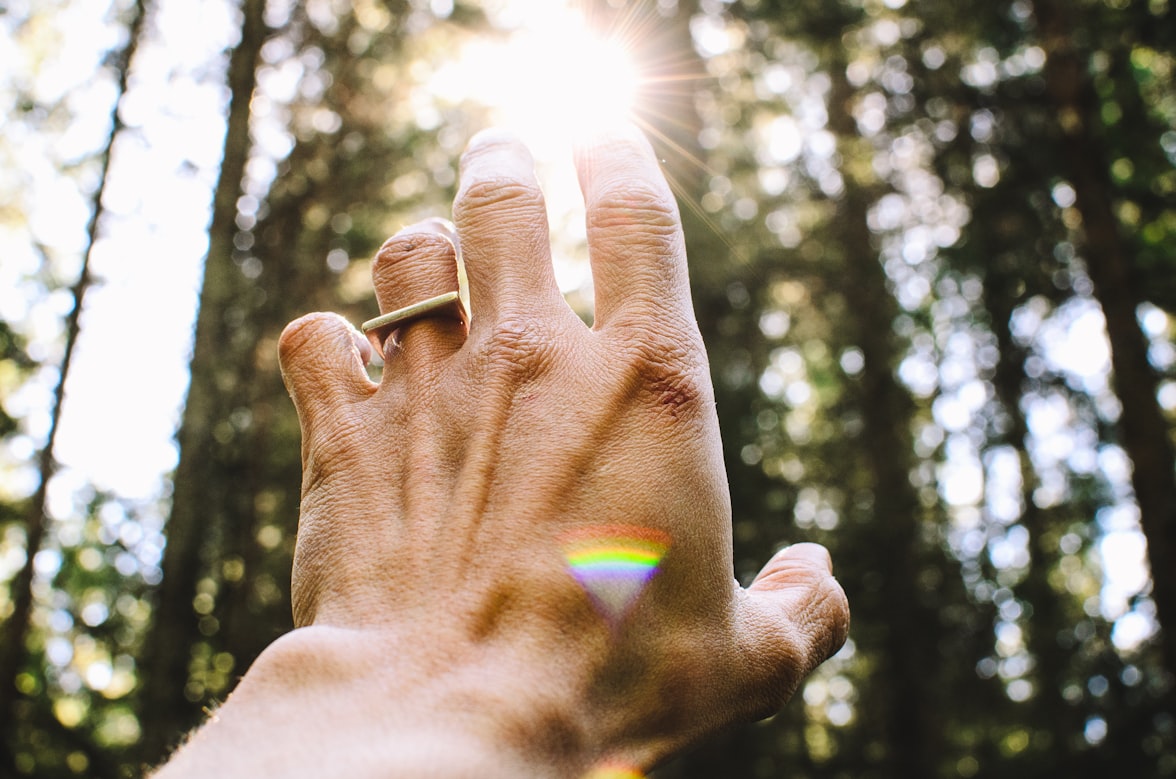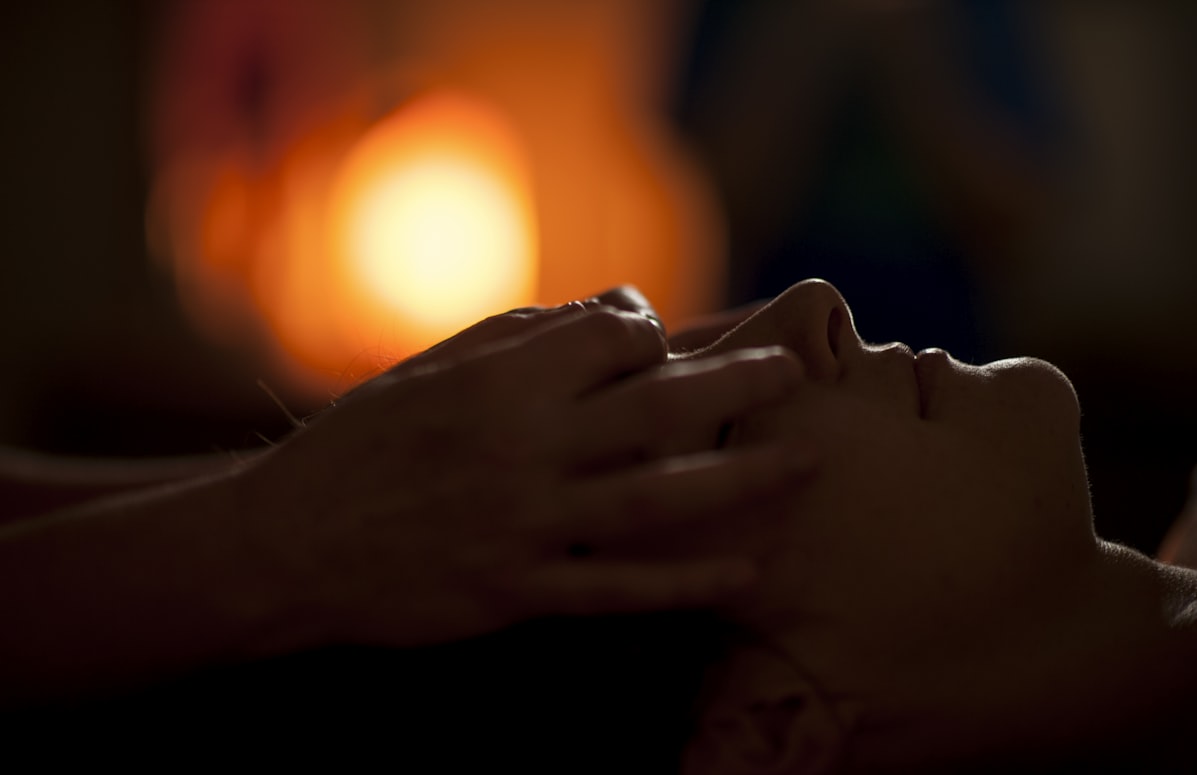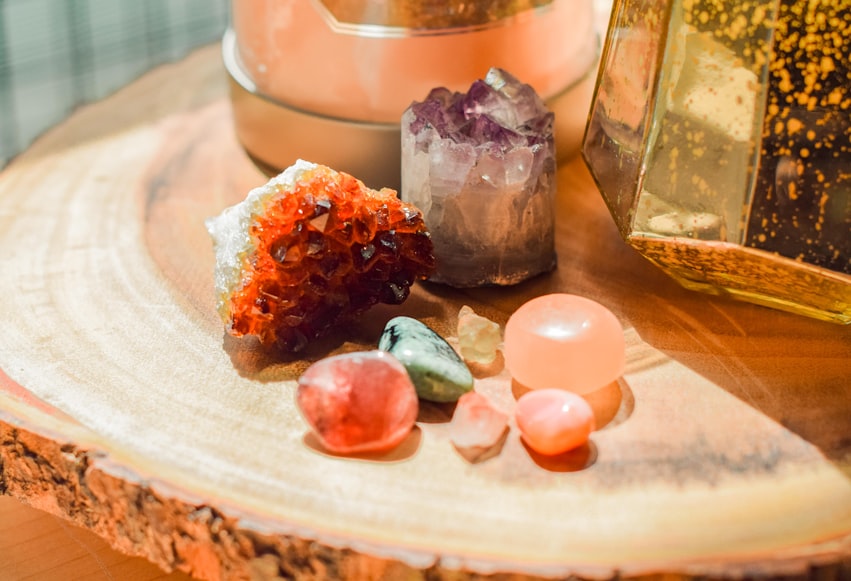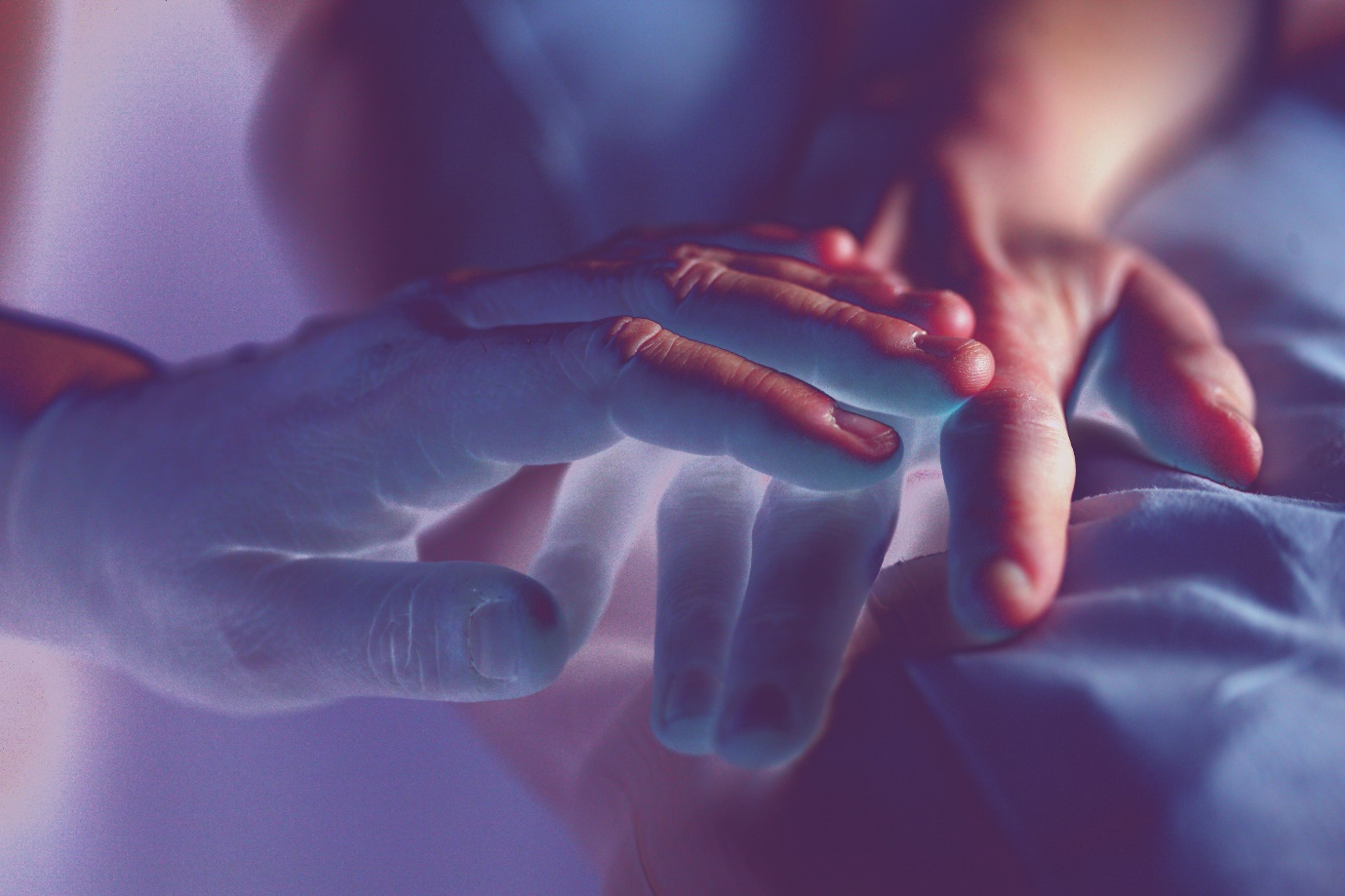Have you ever heard of Reiki massage? This technique is a fusion of ancient Japanese healing practices and modern massage therapy, combining the power of physical touch with spiritual energy.
Reiki has been gaining popularity worldwide as a holistic approach to wellness.
So if you are looking for an alternative way to heal your body and mind, keep reading because this post will explain everything about this Asian massage.
What Is Reiki?
Reiki is a form of alternative healing therapy that originated in Japan. It involves using gentle touch or hovering hands over specific body areas to help transfer energy from the practitioner to the recipient. This ancient technique works by balancing and harmonizing one’s life force energy, known as ki or chi.
Reiki comes from two Japanese words: Rei means universal, and Ki means life force energy. Together, they represent a holistic approach to wellness that aims to improve physical, mental, and emotional well-being.
Reiki massage can be performed on anyone regardless of their age, gender, or religious beliefs. The therapist will assess your needs and work with you to create an individualized treatment plan that aligns with your goals for healing.
This is a non-invasive yet powerful way to promote relaxation and rejuvenation while restoring balance within our body’s natural energies.
The Origin of Reiki
Reiki, a Japanese alternative medicine that combines energy healing and massage techniques, has been around for centuries. Its origin can be traced to the early 1900s when Mikao Usui, a Buddhist monk in Japan, developed this practice.
Today, Reiki is practiced worldwide by millions of people who attest to its effectiveness in promoting relaxation, managing PTSD, and reducing stress levels. It has become an important part of many wellness programs as more individuals seek natural methods for maintaining their physical and emotional well-being.
The origin of Reiki may have started as one man’s quest for inner peace, but it has evolved into a powerful healing modality embraced by many cultures across the globe today.
Combining Reiki and Massage Techniques
Combining Reiki and massage techniques creates a powerful fusion of healing modalities that can enhance relaxation, stress relief, and overall well-being.
Reiki, a Japanese energy healing practice, and massage, a hands-on bodywork technique, work in synergy, resulting in a holistic approach to healing and promoting balance in the body, mind, and spirit.
At its core, Reiki focuses on the flow of life force energy, known as “ki” or “qi,” through the body. Practitioners utilize gentle touch or non-contact hand positions to channel this healing energy to the most needed areas. Reiki aims to restore balance and harmony within the energetic system, supporting the body’s innate healing ability.
Massage, on the other hand, involves manipulating soft tissues and muscles through various techniques such as stroking, kneading, and stretching. It targets physical tension, promotes circulation, and releases muscular knots, thereby improving flexibility, alleviating pain, and enhancing the body’s overall functioning.
Reiki and massage techniques create a synergistic effect that amplifies both practices’ healing benefits.

How Does Reiki Work?
Reiki works by channeling healing energy from the practitioner to the recipient. The practitioner uses their hands to gently touch or hover over various body parts, helping to promote relaxation and reduce stress.
The energy channeled through Reiki is believed to come from a universal life force that permeates all living things. This energy can be blocked or disrupted in our bodies, leading to physical or emotional imbalances. Practitioners use Reiki techniques to clear these blockages and restore balance.
During a Reiki session, the practitioner and recipient may experience warmth, tingling, or relaxation sensations. Recipients need to remain open and receptive during the session for the healing energies of Reiki to work effectively.
While scientific evidence on how these Asian massages work is still limited, many people have reported positive results after this therapy. Whether you believe in its spiritual components or not, there’s no denying that Reiki can help promote calmness and well-being.
Reiki Massage for Pain Relief and Physical Well-being
Reiki Massage, a combination of energy healing and massage techniques, can be particularly effective in providing pain relief and promoting well-being.
Pain relief
Massage techniques applied during a Reiki Massage session can help release tension, reduce muscle tightness, and improve circulation. The hands-on manipulation of soft tissues can target specific areas of pain, such as the back, neck, shoulders, or joints.
By incorporating Reiki, the energy healing aspect enhances the body’s natural healing mechanisms, promoting cellular repair and reducing inflammation, which can contribute to pain relief.
Stress Reduction
Pain often induces stress and tension in the body. The relaxation and stress-reducing effects of Reiki Massage can help alleviate these secondary symptoms. Promoting deep relaxation reduces the body’s stress response, allowing for improved pain management and overall well-being.
Energy Flow and Balance
Reiki’s focus on energy flow and balancing is particularly relevant regarding pain relief and physical well-being. Energetic blockages or disruptions can contribute to physical discomfort and hinder the body’s healing ability. Reiki’s gentle touch and energy transfer during the massage session can help restore the harmonious energy flow, facilitating the body’s natural healing processes.
Individualized Treatment
A skilled Reiki Massage practitioner will assess your specific pain areas, listen to your concerns, and tailor the session to address your unique needs. They may intuitively guide the energy and adapt the massage techniques accordingly, ensuring a personalized approach that addresses your pain relief goals.
Emotional Healing and Balancing through Reiki Massage
Reiki Massage offers a unique opportunity for emotional healing and balancing by combining the gentle touch of massage with the subtle energy healing of Reiki.
Emotional well-being is an integral part of overall health, and this fusion modality aims to address emotional imbalances stored in the body, promoting a sense of harmony and inner peace.
Release of Emotional Blockages
Emotions can become trapped within the body, leading to physical discomfort and imbalances. Reiki Massage can help release these emotional blockages by accessing the energetic root of the emotions and promoting their release. Through gentle touch and energy transfer, the practitioner can facilitate the release of stored emotions, allowing for emotional healing and a greater sense of emotional well-being.
Energetic Balance and Restoration
Reiki’s core philosophy revolves around restoring energetic balance and harmony. Emotional imbalances can disrupt the body’s energy flow, contributing to emotional distress. By incorporating Reiki into the massage session, the practitioner works to harmonize the energetic system, supporting emotional balance and promoting emotional well-being.
Self-Awareness and Self-Care
Reiki Massage encourages self-awareness and self-care. By tuning into the body’s energetic and emotional needs, you can gain insight into emotional imbalances and take steps toward healing and self-growth. The practitioner may guide and support you in developing self-care practices that support your emotional well-being beyond the session.

Integration of Mind, Body, and Spirit
Emotional healing is essential to the mind-body-spirit connection. Reiki Massage recognizes and respects the interconnectedness of these aspects, offering a holistic approach to emotional well-being.
By integrating the physical touch of massage with the healing energy of Reiki, the session supports the alignment and integration of mind, body, and spirit, facilitating emotional healing and balancing.
What Conditions Does Reiki Improve?
Reiki is a form of energy healing that aims to bring physical, emotional, and spiritual balance to the body. As such, it can help alleviate symptoms associated with many different conditions.
Some people turn to Reiki for chronic pain or fatigue relief, while others seek its calming effects on anxiety or depression. It may also be a complementary therapy alongside conventional medical treatments for illnesses like cancer or autoimmune disorders.
Reiki has been known to improve sleep quality and boost immune function, making it an appealing option for those dealing with insomnia or frequent illness. Additionally, it can aid in reducing stress levels and promoting relaxation by balancing the body’s energy flow.
It’s important to note that Reiki is not a replacement for medical treatment but rather an alternative approach that can work well alongside traditional therapies. Those considering Reiki should consult their healthcare provider before beginning any new treatment regimen.
Are There Any Risks?
One of the most common questions about Reiki massage is whether there are any associated risks. Fortunately, Reiki is generally considered a safe and non-invasive practice without significant side effects.
However, some people may experience mild reactions after a session. Some individuals have reported feeling slightly dizzy or lightheaded after receiving Reiki treatment. Others have experienced temporary muscle soreness or fatigue as their body adjusts to the energy flow.
It’s worth noting that these symptoms typically fade away quickly and do not require medical attention. In rare cases, some people may feel emotionally overwhelmed during or after a session, which can be addressed by speaking with your practitioner beforehand about any concerns you may have.
Reiki is considered an extremely gentle and calming therapy that poses very little risk to most people who receive it. However, if you are pregnant or have specific health concerns, it’s always a good idea to consult your doctor before trying this type of therapy to ensure it’s right for you.

What to Expect from a Reiki Session
During a Reiki session, you can expect a calm and relaxing environment where the practitioner will work with you to promote healing and balance within your body, mind, and spirit. Here are some general aspects you can anticipate from a Reiki session:
Comfortable Setting
Typically, a Reiki session takes place in a peaceful and quiet space, often with soft lighting, soothing music, and a comfortable treatment table or chair. You may be asked to remove your shoes and any restrictive clothing while remaining fully clothed.
The Hands-On or Hands-Off Approach
Reiki involves the practitioner placing their hands gently on or slightly above specific areas of your body. The energy flows through their hands to facilitate healing. However, practitioners can also work hands-off, with the energy transmitted from a short distance away. You can discuss your comfort level and preferences with the practitioner beforehand.
Relaxation and Stillness
As the session begins, you’ll be encouraged to relax, close your eyes, and focus on your breath. The practitioner may guide you through a brief meditation or visualization exercise to help you enter a state of deep relaxation and receptivity.
Energy Flow
The practitioner will begin channeling Reiki energy by placing their hands on or near different parts of your body. They may use a series of hand positions, spending a few minutes at each position or intuitively moving their hands based on the energy they sense. The energy is believed to flow to areas needing healing, promoting a sense of balance and well-being.
Sensations and Experiences
People often report various sensations during Reiki, such as warmth, tingling, or gentle pulsations where the practitioner’s hands are placed. Others may feel deep relaxation, calmness, or even emotional release. However, experiences vary; some individuals may not feel anything extraordinary but can still benefit from the session.
Emotional Support
Reiki is a physical healing practice and an opportunity for emotional support and spiritual growth. The practitioner may create a safe space for you to express your feelings, ask questions, or share any insights or experiences that arise during the session.
Session Duration
A typical Reiki session lasts 60 to 90 minutes, although the duration can be adjusted to your specific needs or preferences. It’s advisable to allow extra time before and after the session to transition in and out of the relaxed state without feeling rushed.
Asian massages are known to have healing impacts on the body and mind. Massages like Reiki, Thai, and even Nuru have relaxing effects. The best part is you can get these massage services in your hotel room. If you need a 24-hour massage service provider to bring you peace and relaxation, contact Asian Massage 2 Hotels in Las Vegas.


